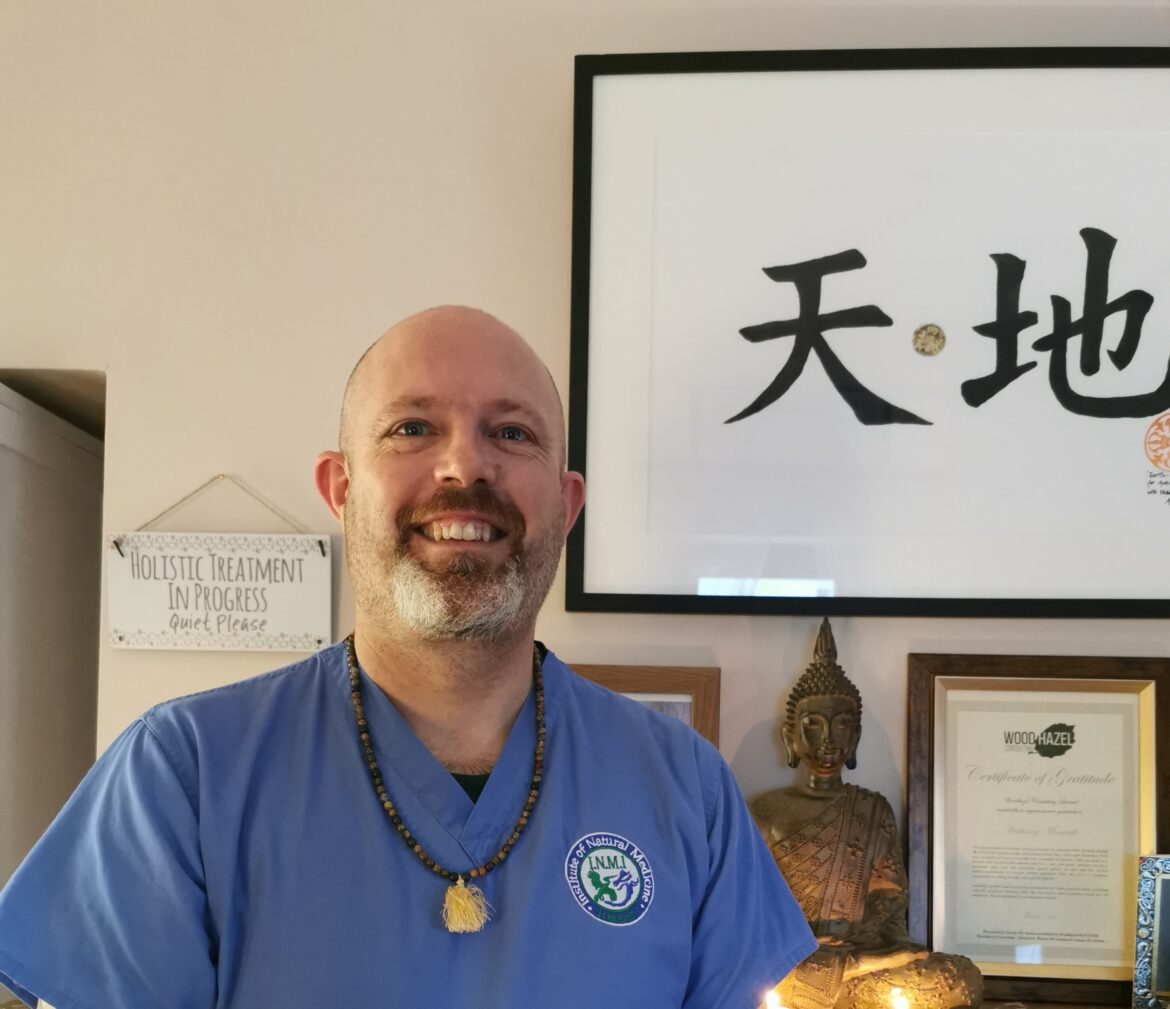We have previously had the honour of working with Anthony Monteith, owner of Jade Natural Health Clinic, in the Positive Club … and we were also pleased to interview him in our Winter 2020/21 issue, on the therapeutic practice of Tui Na.
Traditional Medicine Knows Best
The Tui Na way
by Alison McEvoy
I spoke with Anthony Monteith, owner of Jade Natural Health Clinic in Dublin, about all things Tui Na (pronounced ‘twee nah’) recently. Anthony is a practitioner and teacher of Tui Na and Qi gong. He chose Tui Na because “it helped me. After four sessions my knee pain was gone. But it also has helped millions of people in China. It’s tested, it’s proven to work.”
Tui Na is a rising star in the world of hands-on healing in Ireland. It has long been a main component of Traditional Chinese Medicine (TCM) and is widely used in China, including in hospitals. It is a therapeutic massage and can be performed as either soft tissue or deep tissue massage.
It is a complete system, which means that, in itself, it can be used to treat ailments, or indeed the entire body, through freeing blockages of Chi (aka energy flow). It uses the same body map as acupuncture. However, while acupuncture treats using needles at specific points throughout the body, Tui Na uses manual stimulation of these points. ‘Tui’ – meaning ‘push’ – and ‘Na’ – meaning ‘grasp’ – indicate how this is done. The practitioner uses his or her hands to physically adjust the body in a variety of ways, such as pushing, kneading, rolling, brushing, shaking, pressing and rubbing, to create friction and heat which is absorbed into the body.
Anthony treats a variety of ailments using Tui Na. At the moment, he sees a lot of “postural fatigue”, as people sitting in front of desks suffer with back, neck and shoulder pain. If you’re in pain, listen to it and take action … for pain is “the bitter potion by which the physician within you heals your sick self.” (Kahil Gibran, The Prophet)


